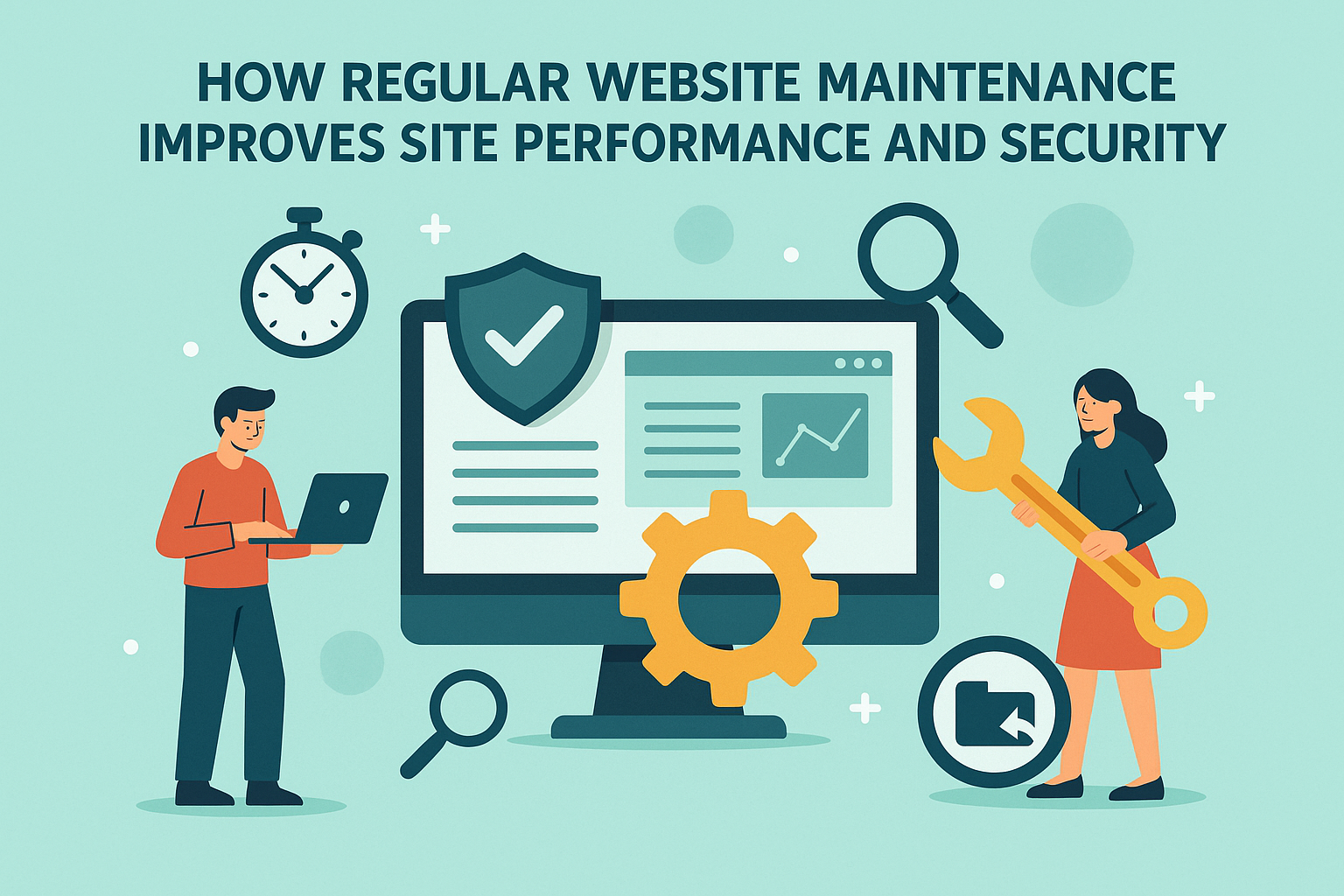
The 2025 Website Maintenance Playbook: Security, Speed, and Stability

Why Regular Website Backups Are Critical for Business Continuity
A website is the digital face of your business, and when it goes down, your brand reputation and revenue are at risk. In 2025, where users expect instant access and flawless performance, proactive website maintenance is more critical than ever. Instead of waiting for issues to arise, businesses must adopt preventive strategies that ensure their sites stay secure, fast, and always available. This guide outlines proven methods to minimize downtime and boost reliability.
Why proactive maintenance matters
Most website problems—slow performance, broken links, downtime, or even breaches—can be prevented with regular maintenance. Proactive upkeep saves businesses from costly outages, protects sensitive data, and improves search engine rankings. By addressing issues before they escalate, organizations ensure a smoother user experience and stronger digital presence.
Core pillars of proactive website maintenance
- Regular security updates: Outdated plugins, themes, or CMS cores often become the entry point for hackers. Patching and updating software reduces vulnerabilities.
- Performance monitoring: Regular speed tests and optimization ensure your site can handle traffic spikes without slowdowns.
- Uptime monitoring: Tools like UptimeRobot or Pingdom help detect outages in real time and alert you before customers notice.
- Backup and restore testing: Automatic daily backups protect against data loss, but restoring them periodically ensures they actually work.
- SEO and content review: Broken links, outdated metadata, and duplicate content harm visibility—routine checks maintain rankings.
Weekly maintenance checklist
- Test site loading speed and identify bottlenecks.
- Verify SSL certificate validity and HTTPS redirections.
- Scan for broken links and missing images.
- Check security logs for unusual login attempts.
- Test all contact forms and payment gateways.
Monthly maintenance checklist
- Update CMS core, plugins, and third-party integrations.
- Run malware scans to detect hidden threats.
- Review analytics to track bounce rates and conversion drops.
- Perform database optimization to improve query speed.
- Validate mobile responsiveness across devices.
Quarterly maintenance checklist
- Conduct a full SEO audit to ensure compliance with latest search engine guidelines.
- Test disaster recovery processes by restoring backups to a staging environment.
- Review user permissions and remove unused accounts to reduce security risks.
- Audit third-party scripts and remove unnecessary ones slowing down performance.
- Update privacy policy and compliance notices to meet legal requirements.
Best practices for proactive website care
- Automate wherever possible: Set up automatic backups, monitoring alerts, and scheduled updates.
- Use staging environments: Test updates and new features in a safe environment before going live.
- Leverage CDNs: Content delivery networks reduce server strain and improve global site speed.
- Document procedures: Maintain records of updates, incidents, and fixes for smoother troubleshooting.
- Partner with professionals: Outsourcing maintenance ensures 24/7 monitoring and expert-level care.
How proactive maintenance impacts business performance
A fast, reliable, and secure website directly impacts revenue. Studies show users abandon websites if loading exceeds three seconds. Similarly, even a single hour of downtime can cost e-commerce stores thousands of dollars. By adopting proactive website maintenance, businesses gain customer trust, rank higher on search engines, and enjoy consistent lead generation.
Conclusion
Proactive website maintenance is no longer optional—it’s a necessity in 2025. From routine updates to disaster recovery planning, every action you take reduces downtime risk and boosts overall reliability. By implementing a structured maintenance strategy, businesses ensure their digital presence remains strong, secure, and profitable for years to come.






